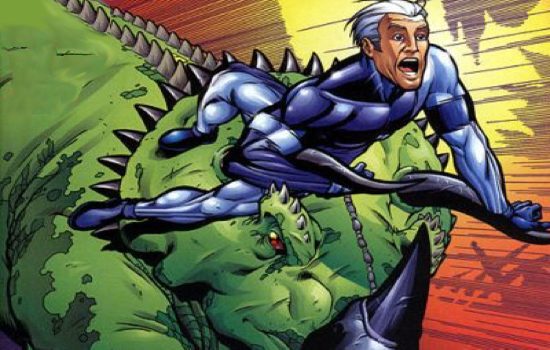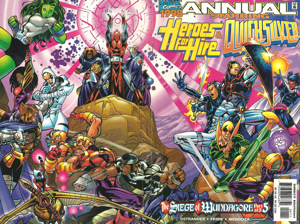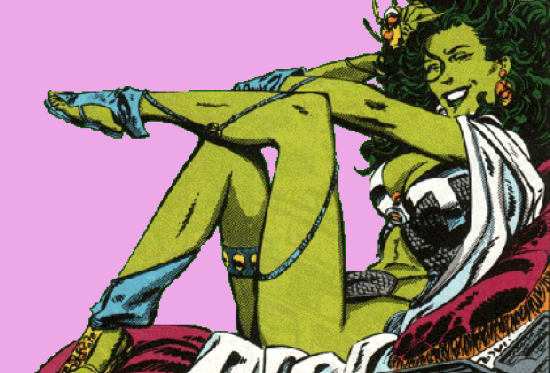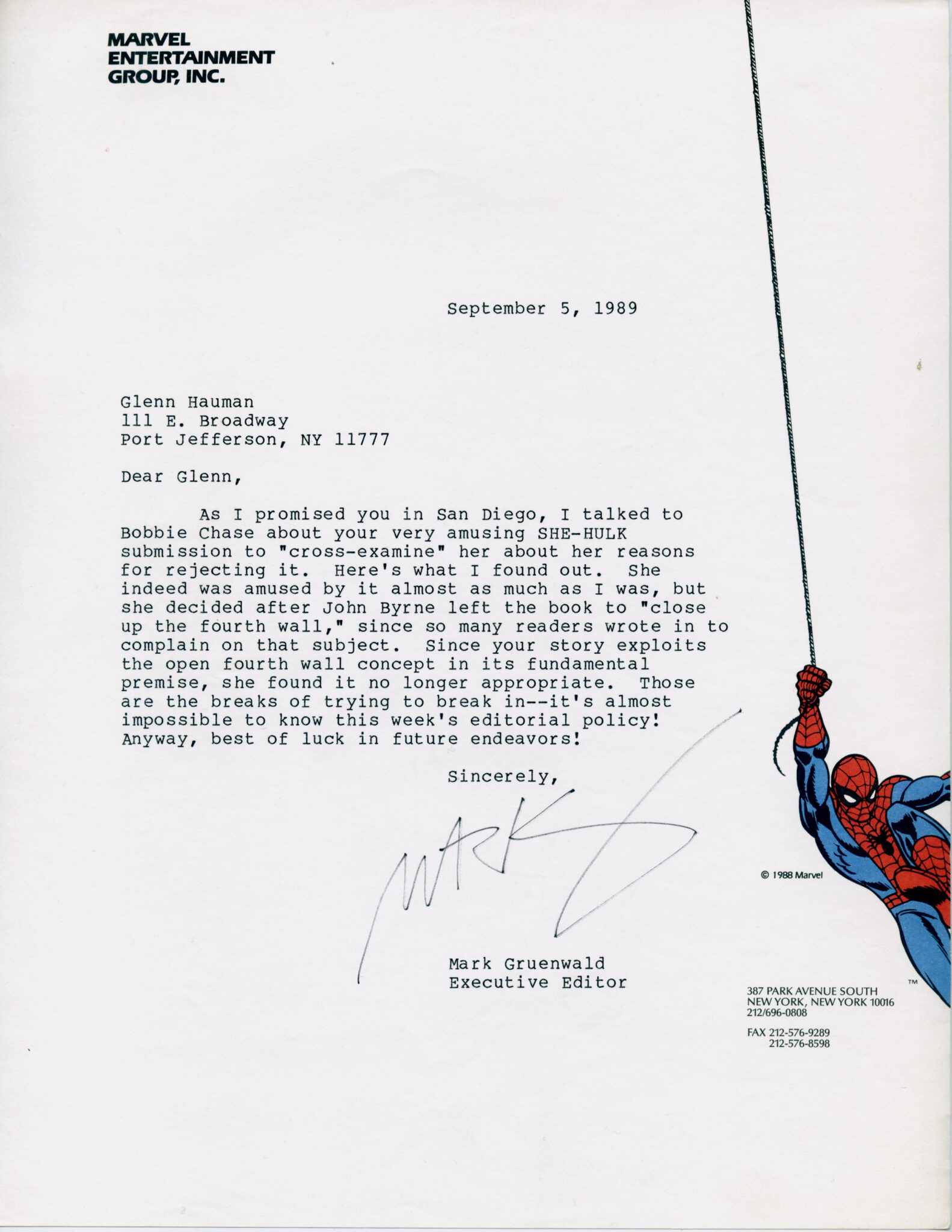The Law Is A Ass #448: The (Dare)Devil’s In De Tales
Yes, him, again.
Matt Murdock. Daredevil. The subject of our last six get togethers.
But not to worry, we shan’t be talking about him again. Ever. Daredevil #612 was the last part of a four-part story called “The Death of Daredevil.” So that’s it, isn’t it? Daredevil is dead.
I mean, it’s not like Marvel would kill off a character and then bring him or her back to life, is it?
In Daredevil #609, the start of the four-part story, Matt was hit by a truck while saving a kid. I don’t know if it was a Mack truck or a semi with a hemi or even a hemi-demi-semi-quaver, but it was big. Big enough to send Matt to the hospital and to reevaluate his lot in life. Lots.
And Matt decided what he was going to do, if it was the last thing he did, was to prove that Wilson (The Kingpin of Crime) Fisk rigged the election and wasn’t legally the mayor of New York City. So Matt gathered together a team who could help him assemble the proof he needed to take down Fisk.
For three issues assistant Manhattan district attorney Matt Murdock and his team did just that. Assembled. They assembled more than Bob the Builder on speed. Until finally, Matt had a strong enough case to take to his boss, Manhattan district attorney Ben Hochberg.
Hochberg didn’t agree. Fisk was, after all, the Mayor. He was Hochberg’s boss and set the budget for Hochberg’s office. Hochberg didn’t want to risk rocking the boat by accusing Fisk of rooking the vote. But Matt prevailed on Hochberg with all the powers of persuasion that he could muster in all of five panels and Hochberg relented. He prosecuted Fisk for election fraud.
First Hochberg called Daredevil. Then he called the rest of Daredevil’s team; Cypher, Frank McGee, and Reader, supporting characters in the story that were so unimportant that I almost didn’t even mention them here. Then Hochberg called every character in the Marvel Universe from A-Bomb to Zzzax.
Okay, not really. But he did call Captain America, Thor, She-Hulk, and Spider-Man.
Oh yeah, and then, as the main event, Hochberg called as his final witness, Wilson Fisk.
Now I wish I could say, “not really,” again, but I can’t. Hochberg called the defendant as a prosecution witness.
But I’m not going to write about that; I already have. Several times. In earlier columns, I’ve covered the fact that the Fifth Amendment’s guarantee against self-incrimination means the prosecution can’t call the defendant as a prosecution witness about as many times as Vin Scully’s covered the Los Angeles Dodgers.
Beside which, it’s not like the trial actually happened. Because at the end of the story we learned that…
This is the place where I’d usually issue a SPOILER WARNING, but I’m not going to. If you’re like me and speak fluent cliché then there’s no way anyone can spoil…
…it was all a dream.
Matt was actually still in the ER after being hit by the truck. The whole four parts of “The Death of Daredevil,” including the trial and conviction of Wilson Fisk and his recall as mayor, was a dream Matt was having while the ER doctors were operating on him.
As endings go that one was a Ken Berry; a big F Trope.
So no, I’m not talking about calling the defendant as a witness.

On the other hand, I am going to talk about calling Thor as a witness, because that feat would have required almost as much legal legerdemain as calling the defendant.
Before witnesses can testify, they generally have to take the oath and swear “to tell the truth, the whole truth, and nothing but the truth, so help [them] God.” Generally, if a witness isn’t willing to take that oath, the witness is not permitted to testify.
Notice, I said, “generally.” Sometimes a witness doesn’t have to swear an oath before testifying. After all, how could Thor swear so help him God? Thor is a god. Okay, not the Judeo-Christian god name-dropped in the standard court oath, but he is the Norse god of thunder. An oath before the Judeo-Christian God would be meaningless to Thor as he doesn’t believe in that god.
In the same way, Thor couldn’t swear so help him some god in which he believed; say himself or Odin. The Anglo-American system of justice doesn’t recognize any of the gods in which Thor might believe as gods, so it wouldn’t allow a witness to swear so help him one of them.
Now, the Anglo-American system of justice does have a back-up. Witnesses who don’t happen to believe in the Judeo-Christian God, like Muslims; Buddhists; Hindus; or atheists who don’t happen to be in a foxhole, have an alternative. They can affirm under penalty of perjury that they will tell the truth, the whole truth, and yadda, yadda, yadda. But for Thor, even such an affirmation might be a whole yadda nothing.
Thor is, after all, the prince of Asgard. As such he might well have diplomatic immunity from prosecution for crimes committed in America. Even perjury. If that is the case, the affirmation would have no meaning to him and wouldn’t be sufficient to guarantee that he would tell the truth.
Sure Thor could spout off some pseudo-Shakespearean speech and assure the court that, “the word of the Son of Odin is ever my bond” and that he would no more tell defy the laws of man by lying in court than he would defy the laws of gravity by throwing a hammer then flying behind it as it dragged him through the sky.
And maybe the court would believe him and let Thor testify. Or maybe it wouldn’t.
It’s a puzzlement which, fortunately, I don’t have to puzzle over right now. Because I’m not really writing this column right now. It’s all a…
ZZZZZZZ


























